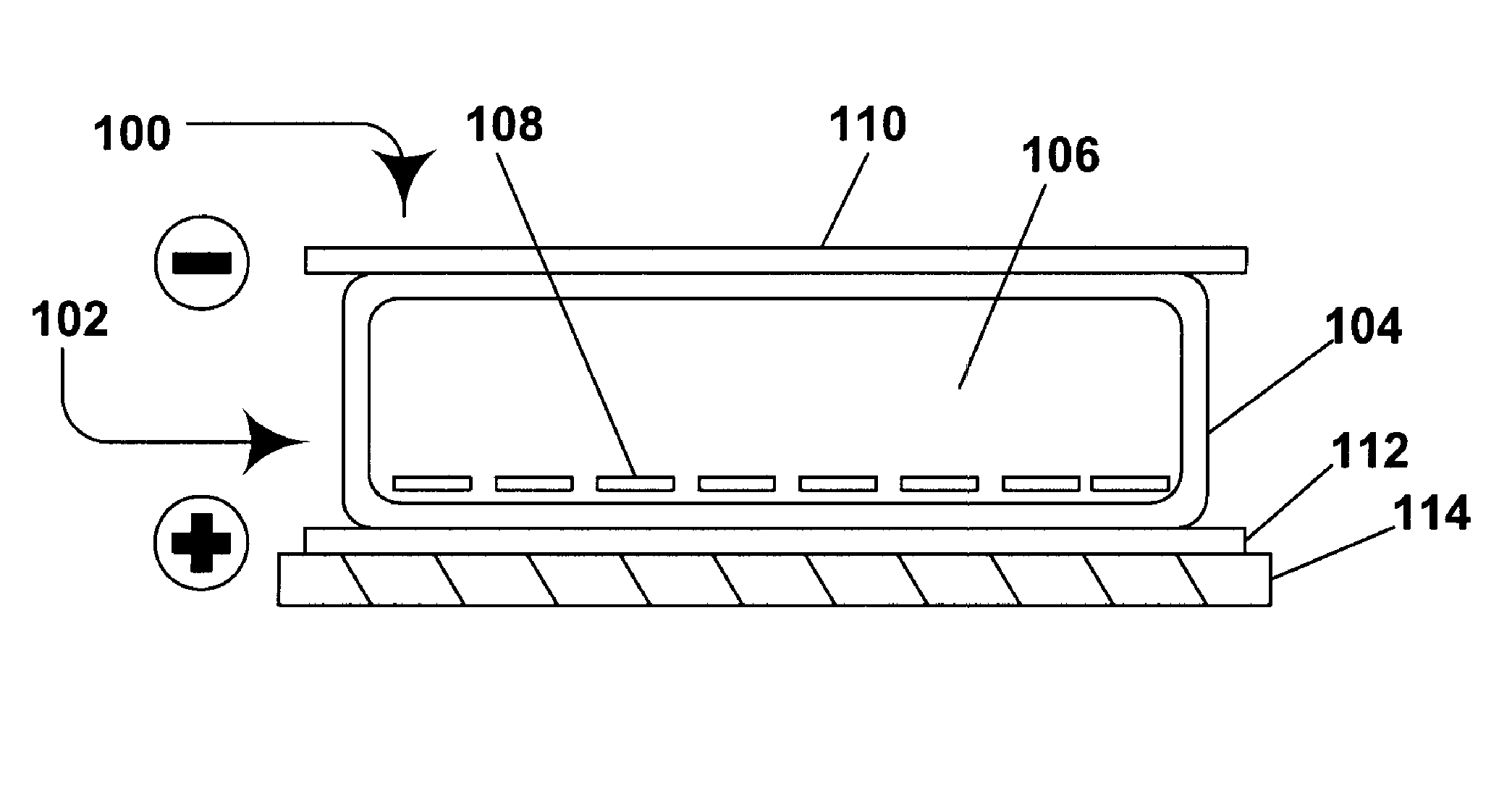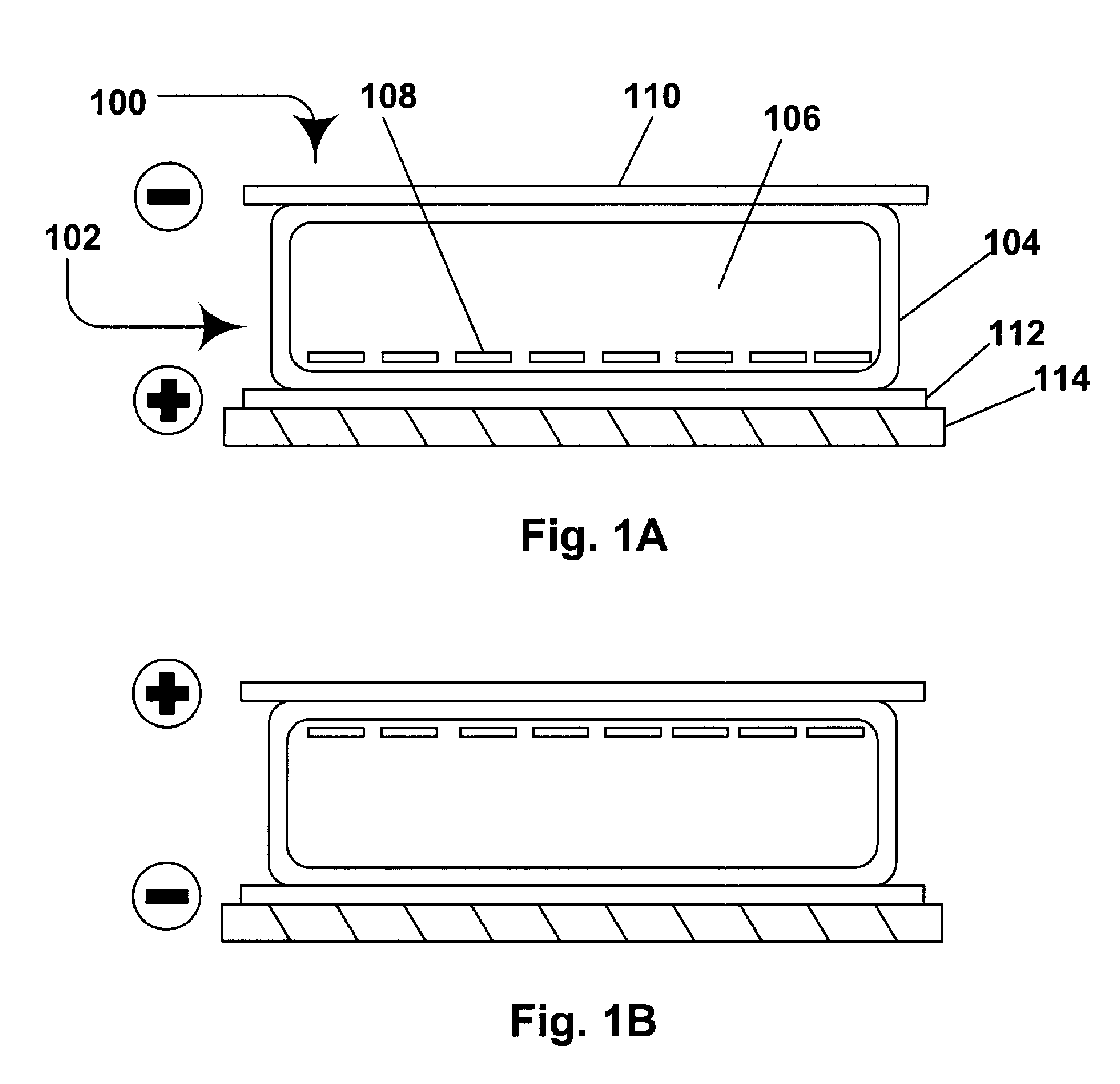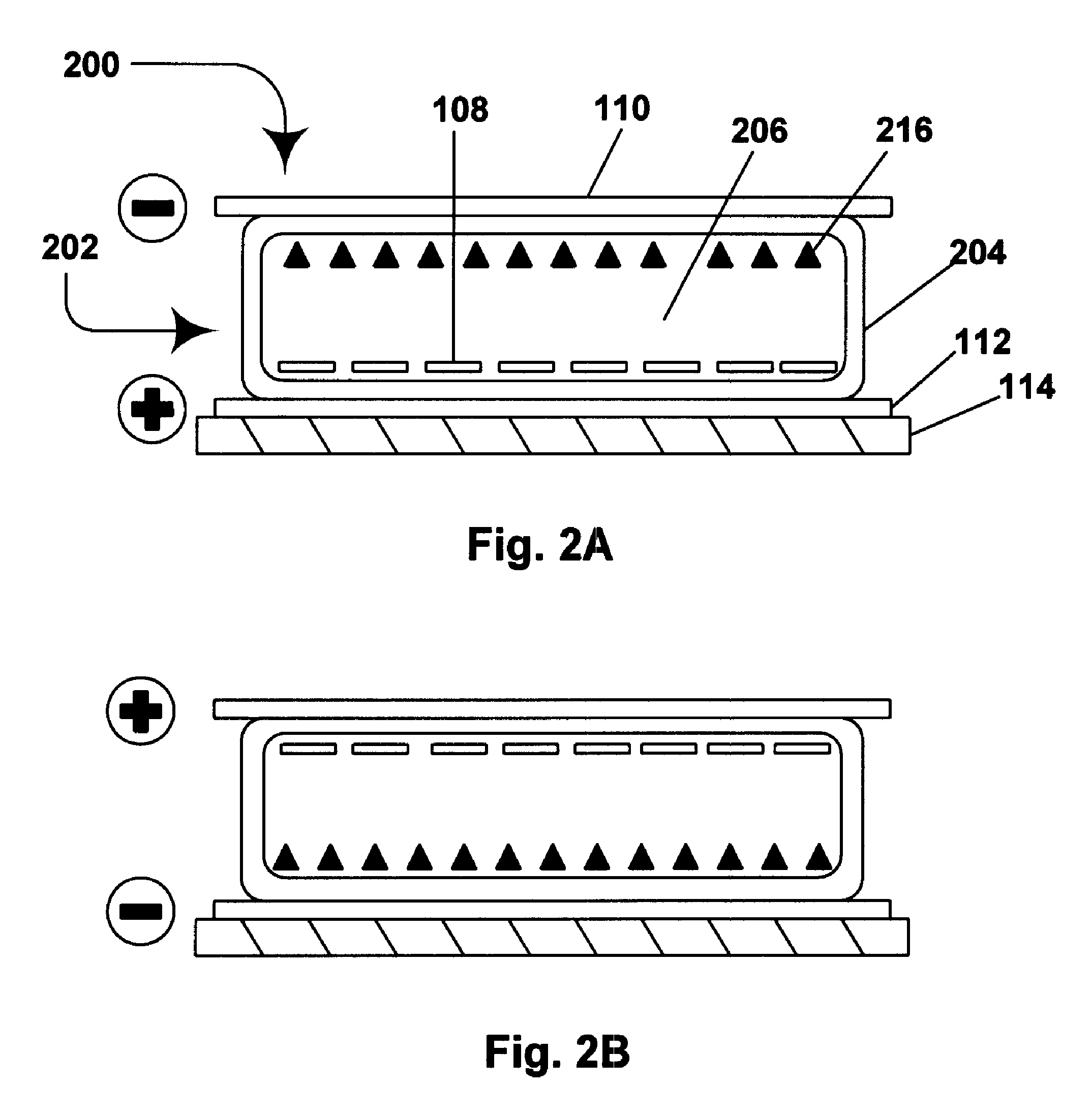Electrophoretic media containing specularly reflective particles
a technology of specular reflection and electrophoretic media, which is applied in the field of electrophoretic media, can solve the problems of insufficient service life of these displays, inability to achieve widespread use, and loss of backplane scattered light, so as to reduce backplane scattering, improve electrophoretic mobility, and enhance reflectivity
- Summary
- Abstract
- Description
- Claims
- Application Information
AI Technical Summary
Benefits of technology
Problems solved by technology
Method used
Image
Examples
example 1
[0106]This Example illustrates the provision of a silica coating on specularly reflective particles comprising a family of pigments known to those skilled in the art as pearlescent pigments, which may be used in the present media and displays. The procedure used is adapted from U.S. Pat. No. 3,639,133.
[0107]Mearlin MagnaPearl pigment (titania on a mica surface, 50 g, particle size range of about 2 to 10 μm; the material used was Mearlin MagnaPearl 3100, available from Engelhard Corporation, Pigments and Additives Group, Iselin, N.J., 08830-0770—“Mearlin MagnaPearl” is a Registered Trade Mark) was placed in a sodium silicate solution (415 of a 0.073M solution with 1.9% sodium hydroxide), and the resultant mixture was vigorously shaken in a plastic bottle and then sonicated for 1 hour at 30-35° C. The suspension was then heated to 90-95° C. over a period of 1 hour and sulfuric acid (150 ml of a 0.22M solution) and additional sodium silicate (80 ml of a 1.17M solution with 0.28% sodium...
example 2
[0108]This Example illustrates reaction of the silica-coated pigment prepared in Example 1 with a bifunctional reagent in the first stage of a process to provide a positively-charged, polymer-coated specularly reflective particle useful in the electrophoretic media and displays of the present invention.
[0109]To a mixture of ethanol (1000 ml) and water (100 ml), concentrated ammonium hydroxide was added (about 12 ml) until the pH reached 9.0-9.5, N-[3-trimethoxysilyl)-propyl]-N′-(4-vinylbenzyl)ethylene diamine hydrochloride (40 g of a 40 weight per cent solution in methanol) was added, and the resultant solution was stirred rapidly for 4 minutes. The silica-coated Mearlin MagnaPearl 3100 pigment (50 g) prepared in Example 1 was then added, and the mixture stirred rapidly for 7 minutes. The resultant suspension was poured into plastic bottles and centrifuged at 3500 rpm for 30 minutes. The supernatant liquor was decanted, and the silanized pigment re-dispersed in ethanol and centrifug...
example 3
[0110]This Example illustrates reaction of the silica-coated pigment prepared in Example 1 with a bifunctional reagent in the first stage of a process to provide a negatively charged, polymer-coated specularly reflective particle useful in the electrophoretic media and displays of the present invention.
[0111]To a mixture of ethanol (415) and water (35 ml), 33% acetic acid (about 18 ml) was added until the pH reached 4.5, trimethoxysilylpropyl methacrylate (20 ml) was added, and the resultant solution was stirred rapidly for 4 minutes. The silica-coated Mearlin MagnaPearl 3100 pigment (50 g) prepared in Example 1 was then added, and the mixture stirred rapidly for 7 minutes. The resultant suspension was poured into plastic bottles and centrifuged at 3500 rpm for 30 minutes. The supernatant liquor was decanted, and the silanized pigment re-dispersed in ethanol and centrifuged at 3500 rpm on the same centrifuge for 30 minutes, and the liquid decanted. The washing was repeated, and the ...
PUM
| Property | Measurement | Unit |
|---|---|---|
| aspect ratio | aaaaa | aaaaa |
| aspect ratio | aaaaa | aaaaa |
| length | aaaaa | aaaaa |
Abstract
Description
Claims
Application Information
 Login to View More
Login to View More - R&D
- Intellectual Property
- Life Sciences
- Materials
- Tech Scout
- Unparalleled Data Quality
- Higher Quality Content
- 60% Fewer Hallucinations
Browse by: Latest US Patents, China's latest patents, Technical Efficacy Thesaurus, Application Domain, Technology Topic, Popular Technical Reports.
© 2025 PatSnap. All rights reserved.Legal|Privacy policy|Modern Slavery Act Transparency Statement|Sitemap|About US| Contact US: help@patsnap.com



